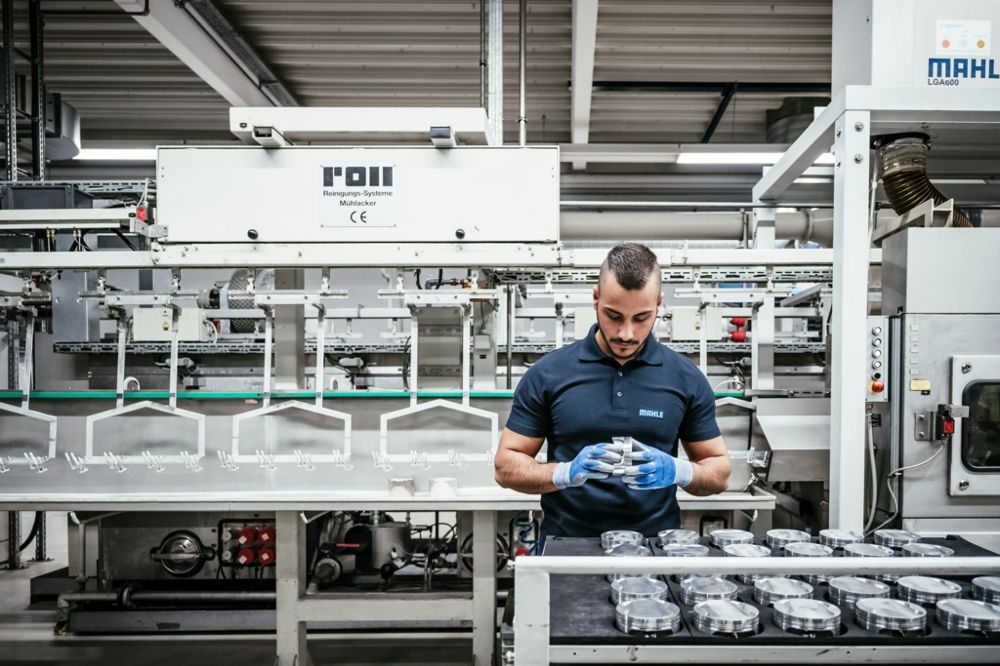Mahle Sees ICE As Weapon in Fighting Climate ChangeMahle Sees ICE As Weapon in Fighting Climate Change
Michael Frick, Mahle’s deputy chairman and chief financial officer, says the increased electrification of powertrains must be balanced by the reality that climate-warming emissions could increase if internal combustion does not feature in the drive for lower CO2.

Automotive supply giant Mahle believes that while electric mobility is the industry’s natural future course, internal-combustion-engine technology will play a vital role in controlling climate change in the here and now.
That was the message delivered by Michael Frick, Mahle’s deputy chairman and chief financial officer, during the company’s annual news conference. Frick delivered the presentation while serving as interim chairman after Matthias Arleth left the company after just a few weeks following a disagreement with the board about the direction of the company, an issue Frick refused to elaborate on during the conference.
However, in line with many senior automotive executives, Frick (pictured, below left) says the increased electrification of powertrains – e-mobility – must be balanced by the reality that climate-warming emissions could increase if ICEs do not feature in the drive for lower CO2.

Michael Frick - Mahle
“The highest demand in the marketplace in Europe is currently in the sector of e-mobility,” he says. “However, that will not be sufficient for carbon neutrality in the transport sector. We need to do more and we need to work faster. Where e-mobility currently reaches its limits, we can close the gap with other technologies.”Frick says Mahle, as a global company, has to react to the differing demands and pace of change that individual markets will face in the near future. “Even as the transformation to climate-neutral mobility is gathering pace, we must recognize that global mobility is heterogeneous and that the pace of development of e-mobility may be very different from country to country.
“Cars and trucks with internal-combustion engines will, therefore, continue to drive along the world’s roads for many years. Mahle will remain a reliable partner for markets and customers in this sector,” Frick says. “Even as the share of classical drive systems falls, the requirements faced by these products will become increasingly stringent in terms of reduced carbon-dioxide emissions, improved efficiency and regulatory limits.
“This is why we will also continue to pursue higher efficiency levels in this segment with highly advanced products,” he says. “After all, internal-combustion engines can make an immediate contribution to climate protection with non-fossil fuels, such as (synthetic) e-fuels. And immediate action is certainly required.”
Yet the advance of electric vehicles must be met, Frick says, adding that his company is plowing most of its R&D efforts into this field, albeit not just focusing on battery technology. He explains: “However, we will also remain active in other areas of technology in order to be prepared to meet demand from markets and customers as soon as it arises. Examples include the fuel cell and the hydrogen engine (pictured, below), for which we see considerable potential in the commercial-vehicle sector. In overall terms, this means that we will be forcing the pace of technological transformation. Almost 100% of our research and development investments are being made in future-oriented areas.”

Mahle engineers - Ballard fuel cell_0
While Mahle has seen impressive sales growth in the past year, up from €9.8 billion ($10.8 billion) to €10.9 billion ($12 billion), Frick admits the company still is making a year-on-year loss.
“However, there was one bitter pill to swallow on our way to a turnaround. In 2021, Mahle still reported a consolidated net loss of €108 million ($119 million). At any rate, this was 75% lower than the previous year. This shift from a positive operating result to a consolidated net loss for the year was the result of higher financing expenses and higher tax payments which we could not offset by deducting tax losses carried forward.
“In my opinion, the conclusions to be drawn from business developments in 2021 are as follows: We were able to master the volatile situation on global markets effectively. Even in troubled times, we remained a reliable partner to our customers. Our transformation is well underway,” Frick says.
“We intend to grow rapidly in the field of new technologies at the same time as remaining profitable in our previous core business areas. This will call for considerable effort and for our full attention. This is why we are continuing our research and development efforts at a high level. We invested €666 million ($735 million) in future-oriented areas, €22 million ($24 million) more than the previous year. The R&D ratio was 6.1%.”
About the Author
You May Also Like

